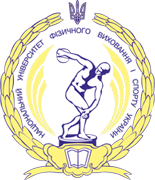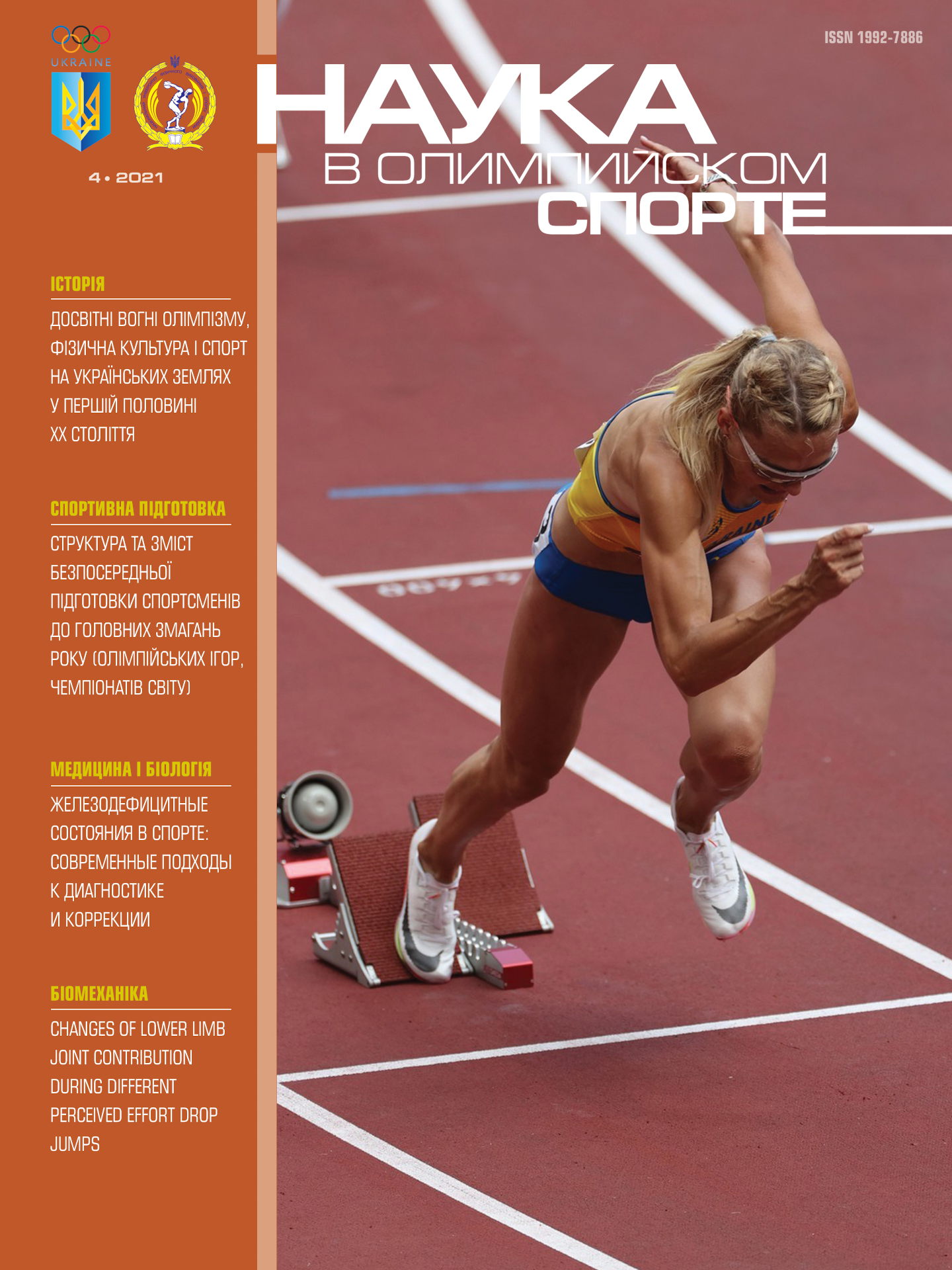Abstract:
It is known that aerobic exercises have a minimal eff ect on skeletal muscle mass, and therefore, compared with the results of studying the eff ect of strength exercises on muscle fi ber, there is an insuffi cient amount of scientifi c researches. In this work we attempted to compare the eff ectiveness of the impact on the rearrangement of muscle fi ber of exercises performed through various, often opposed to each other, training means-exercises performed on the simulator for the so-called cyclic aerobic work (cycle ergometer) and strength exercises with a barbell. Data on the power of pedaling at the . VO2max level can be obtained by measuring by a direct method, by gasometric analysis and a step test, or by using prognostic equations. The question of applying such equations, which could predict the power of pedaling, in revising the existing views on the impact of aerobic training in relation to the mass of skeletal muscles is very relevant, but among representatives of strength sports is insuffi ciently studied.
Objective. Revision of existing views on the impact of aerobic training in relation to skeletal muscle mass based on the development and application of the prognostic equation for determining the power of pedaling at the . VO2max level in representatives of strength sports events.
Methods. Analysis and generalization of literary sources, pedagogical, biomedical methods, methods of mathematical statistics and regression analysis.
Results. Analysis and generalization of the literary sources showed that correctly performed aerobic exercises lead to hy pertrophy of skeletal muscles, which is comparable with strength training. It is proved that the developed prognostic equation helps to predict the pedaling power at the . VO2max level while working on a bicycle ergometer and has a high correlation with the results of the direct measurement method, whereas the approach itself has several advantages over expensive testing procedures.
Conclusions. In contrast to the existing view that aerobic work reduces the physiological cross-section of skeletal muscles, whereas strength one increases it, the paper shows that loads with weights and cyclic exercises are the means of recruiting muscle fi bers, and the intensity of exercises (method or methodics) allows to trigger all the stimuli of muscle growth.
Objective. Revision of existing views on the impact of aerobic training in relation to skeletal muscle mass based on the development and application of the prognostic equation for determining the power of pedaling at the . VO2max level in representatives of strength sports events.
Methods. Analysis and generalization of literary sources, pedagogical, biomedical methods, methods of mathematical statistics and regression analysis.
Results. Analysis and generalization of the literary sources showed that correctly performed aerobic exercises lead to hy pertrophy of skeletal muscles, which is comparable with strength training. It is proved that the developed prognostic equation helps to predict the pedaling power at the . VO2max level while working on a bicycle ergometer and has a high correlation with the results of the direct measurement method, whereas the approach itself has several advantages over expensive testing procedures.
Conclusions. In contrast to the existing view that aerobic work reduces the physiological cross-section of skeletal muscles, whereas strength one increases it, the paper shows that loads with weights and cyclic exercises are the means of recruiting muscle fi bers, and the intensity of exercises (method or methodics) allows to trigger all the stimuli of muscle growth.
Аннотация:
Аеробні вправи, як відомо, чинять мінімальний вплив на масу скелетних м’язів, тому, порівняно з результатами вивчення впливу силових вправ на м’язове волокно, є недостатня кількість наукових досліджень. У даній роботі зроблено спробу порівняння ефективності впливу на перебудову м’язового волокна вправ, що виконуються за допомогою різних, що часто протиставляються один одному тренувальних засобів, - вправ, що виконуються на тренажері для так званої циклічної аеробної роботи (велотренажер) і вправ силового характеру зі штангою. Дані з потужності педалювання на рівні VO2 max можна отримати під час вимірювання прямим методом, шляхом газометричного аналізу і ступінчастого тесту або при використанні прогностичних рівнянь. Питання застосування таких рівнянь, які б могли прогнозувати потужність педалювання, під час перегляду існуючих поглядів на вплив аеробних тренувань відносно маси скелетних м’язів дуже актуальне, але у представників силових видів спорту недостатньо вивчене.
Мета. Перегляд існуючих поглядів на вплив аеробних тренувань відносно маси скелетних м’язів на основі розробки і застосування прогностичного рівняння для визначення потужності педалювання на рівні VO2max у представників силових видів спорту.
Методи. Аналіз і узагальнення джерел літератури, педагогічні, медико-біологічні методи, методи математичної статистики і регресійного аналізу.
Результати. Аналіз і узагальнення джерел літератури показали, що правильно виконані аеробні вправи призводять до гіпертрофії скелетних м’язів, що можна порівняти з силовими тренуваннями. Доведено, що розроблене прогностичне рівняння допомагає прогнозувати потужність педалювання на рівні VO2max під час роботи на велоергометрі і має високу кореляцію з результатами прямого методу вимірювання, а сам підхід має ряд переваг перед дорогими процедурами тестування.
Висновок. На відміну від сформованого уявлення про те, що аеробна робота зменшує фізіологічний поперечник скелетних м’язів, а силова, навпаки, збільшує, показано, що і навантаження з обтяженнями, і вправи циклічного характеру є засобами рекрутування м’язового волокна, а інтенсивність вправ (метод або методика) дозволяє запускати всі стимули м’язового росту.
Мета. Перегляд існуючих поглядів на вплив аеробних тренувань відносно маси скелетних м’язів на основі розробки і застосування прогностичного рівняння для визначення потужності педалювання на рівні VO2max у представників силових видів спорту.
Методи. Аналіз і узагальнення джерел літератури, педагогічні, медико-біологічні методи, методи математичної статистики і регресійного аналізу.
Результати. Аналіз і узагальнення джерел літератури показали, що правильно виконані аеробні вправи призводять до гіпертрофії скелетних м’язів, що можна порівняти з силовими тренуваннями. Доведено, що розроблене прогностичне рівняння допомагає прогнозувати потужність педалювання на рівні VO2max під час роботи на велоергометрі і має високу кореляцію з результатами прямого методу вимірювання, а сам підхід має ряд переваг перед дорогими процедурами тестування.
Висновок. На відміну від сформованого уявлення про те, що аеробна робота зменшує фізіологічний поперечник скелетних м’язів, а силова, навпаки, збільшує, показано, що і навантаження з обтяженнями, і вправи циклічного характеру є засобами рекрутування м’язового волокна, а інтенсивність вправ (метод або методика) дозволяє запускати всі стимули м’язового росту.













